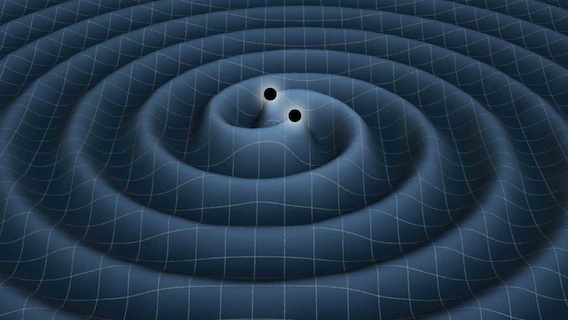
BMCC science professors Saavik Ford and Barry McKernan—along with their colleagues from the Harvard-Smithsonian Center for Astrophysics, the Institute for Advanced Study at Princeton, and Columbia University—are creating a storm of media attention with their assertion that gravitational waves in space can affect the oscillations, or vibrations of stars.
Those oscillations, in turn, affect the brightness of the star, and help reveal the behavior of a gravitational wave passing through it.
The scientists published their findings in Monthly Notices of the Royal Astronomical Society: Letters, and the work will soon be highlighted in the prestigious international journal, Nature, in its “Science News & Highlights” section.
As it turns out, the connection that Ford, McKernan and their colleagues make between gravity waves and oscillation patterns of stars is allowed by Albert Einstein in his 1915 theory of general relativity.
“It’s pretty cool that 100 years after Einstein proposed this theory, we’re still finding hidden gems,” said Professor McKernan in a recent interview with the American Museum of Natural History.
“If you place a violin near a piano, and strike the correct key on the piano, you can cause a string on the violin to resonate. A merging black hole binary emitting gravitational waves of ever higher frequency is like a piano striking the keys in sequence from low to high frequency—each time the frequency matches one of the violin strings, it will vibrate in sympathy. If you’re close to the merger, it’s like a piano on steroids!” says Professor Ford.
BMCC Professors Ford and McKernan are both research associates in the Department of Astrophysics at the American Museum of Natural History, as well as faculty members at CUNY’s Graduate Center and Kavli Scholars at the Kavli Institute for Theoretical Physics, University of California, Santa Barbara.
STORY HIGHLIGHTS
- BMCC Professors Saavik Ford and Barry McKernan lead a team of scientists who see a link between gravitational waves and the stars they pass through
- Their model asserts that the brightness of stars can change depending on the frequency and intensity of the gravitational waves passing through them
- This work is being highlighted in a number of prestigious journals and magazines, including Nature

